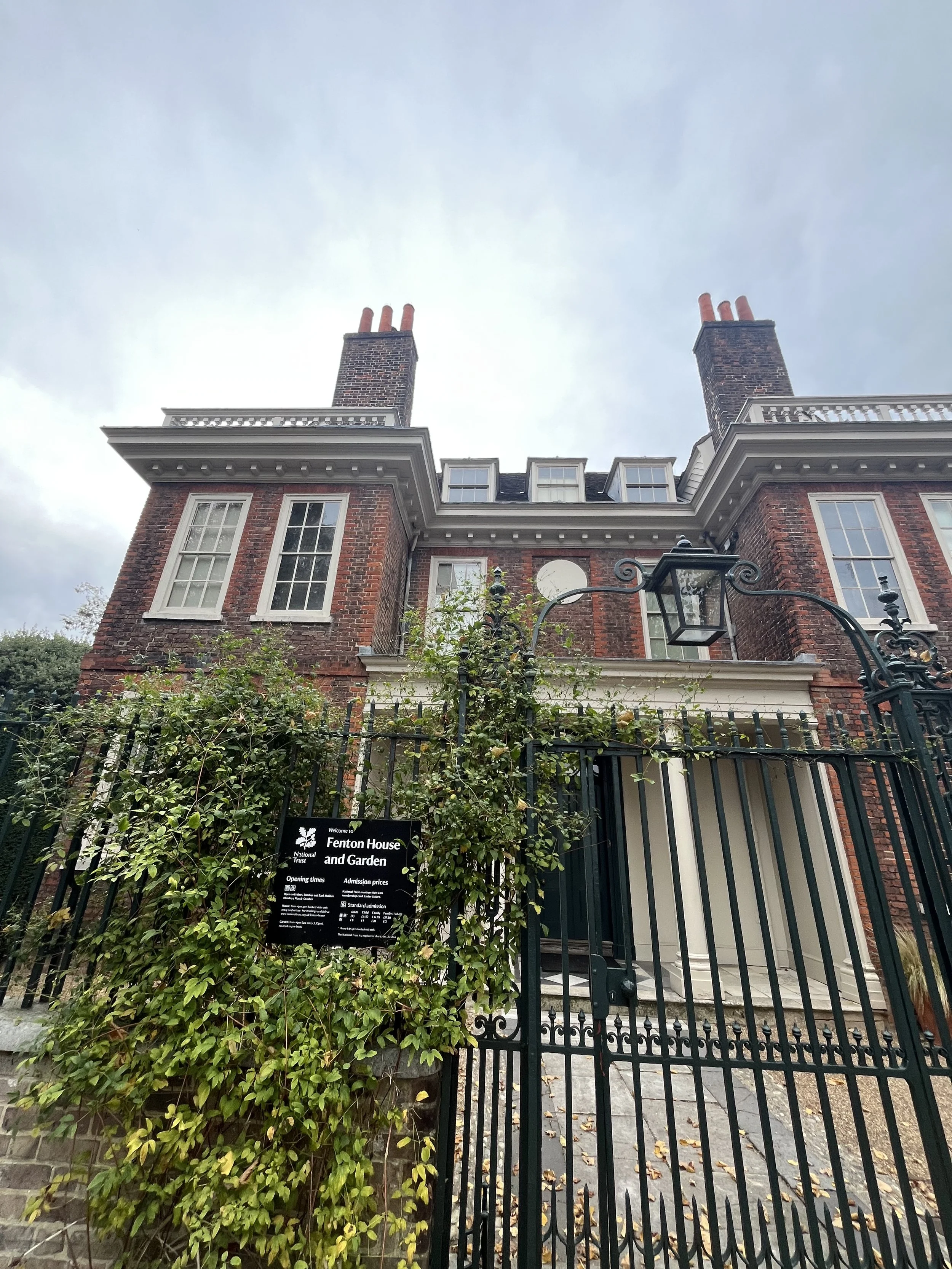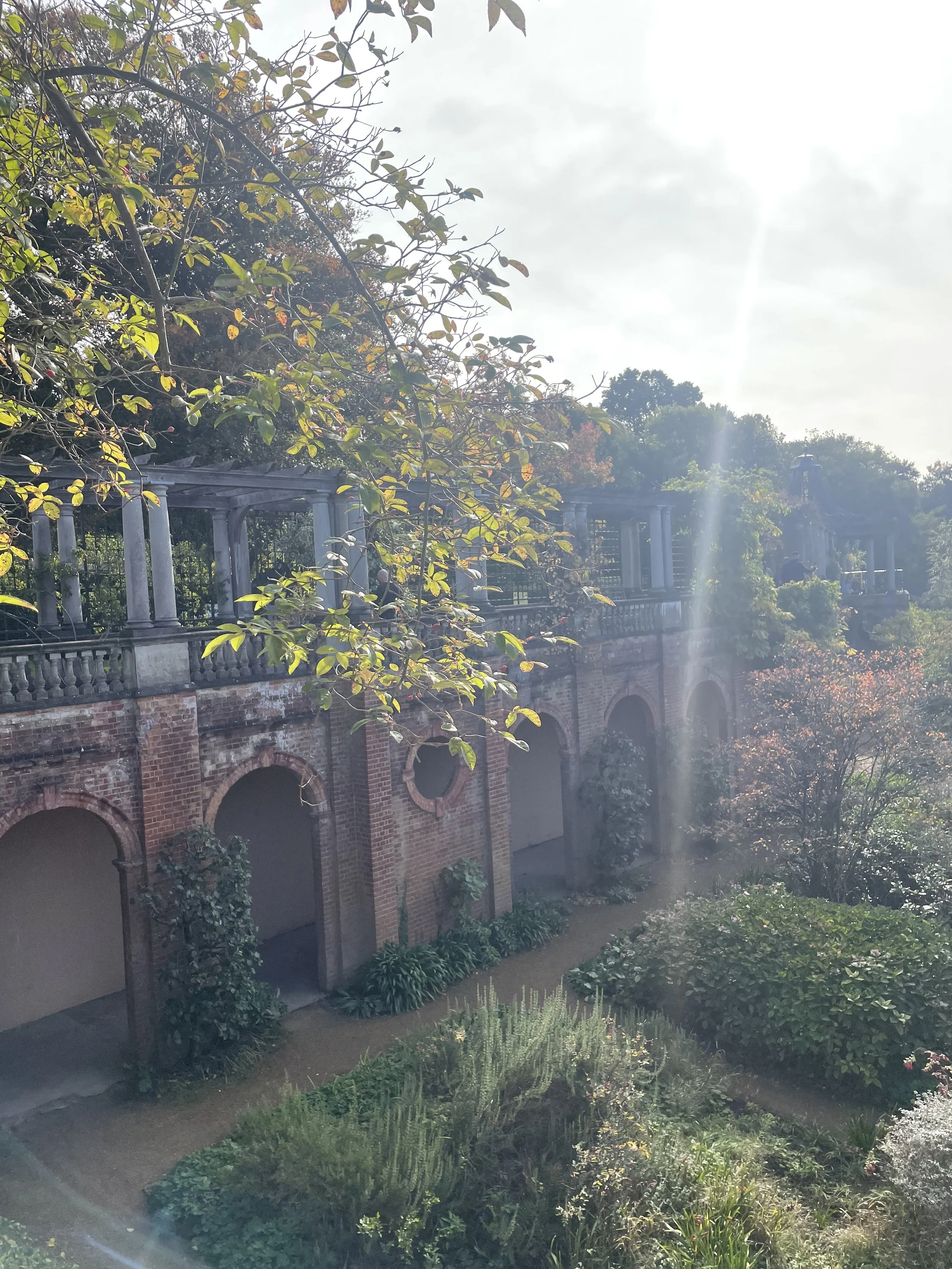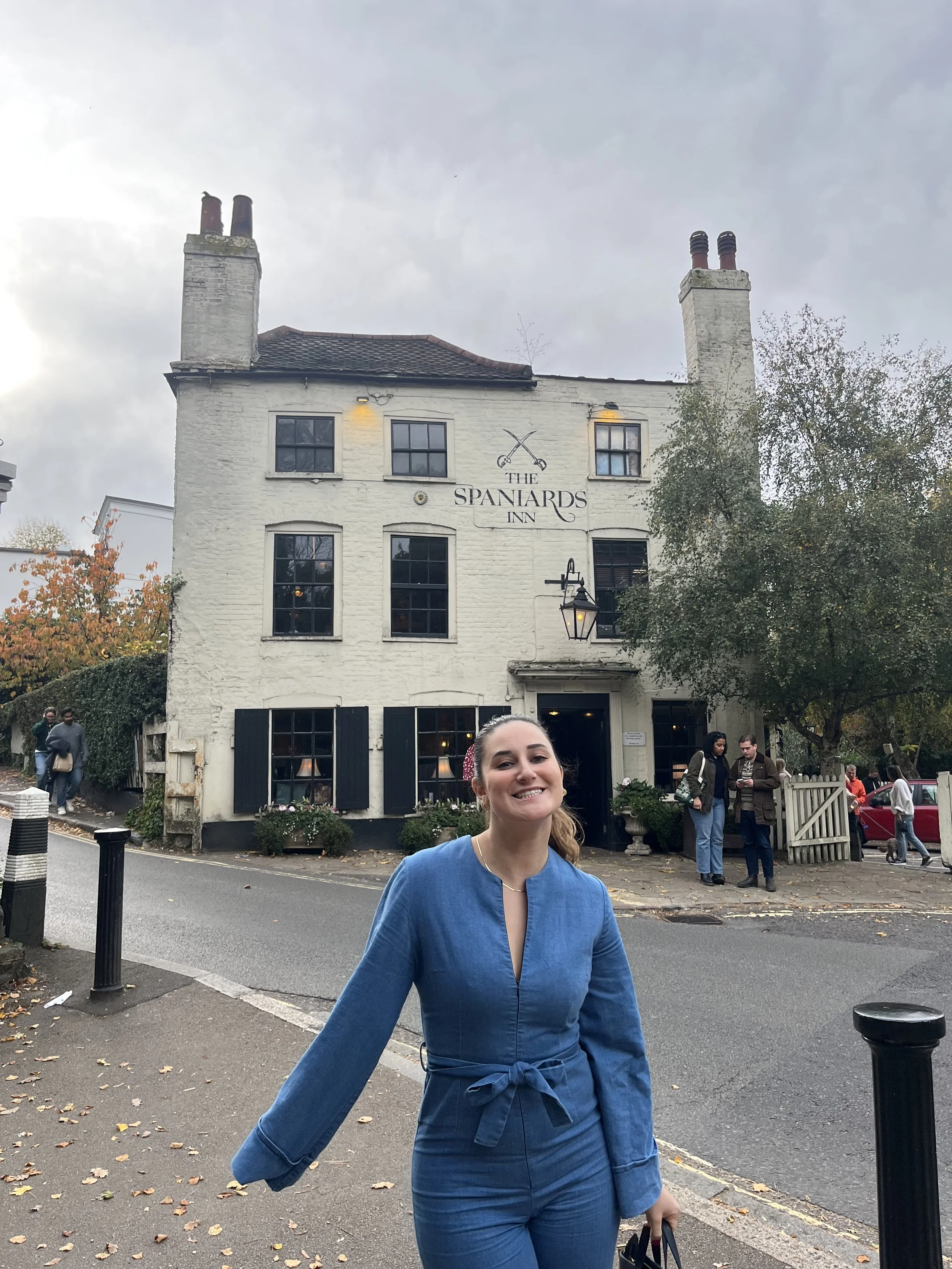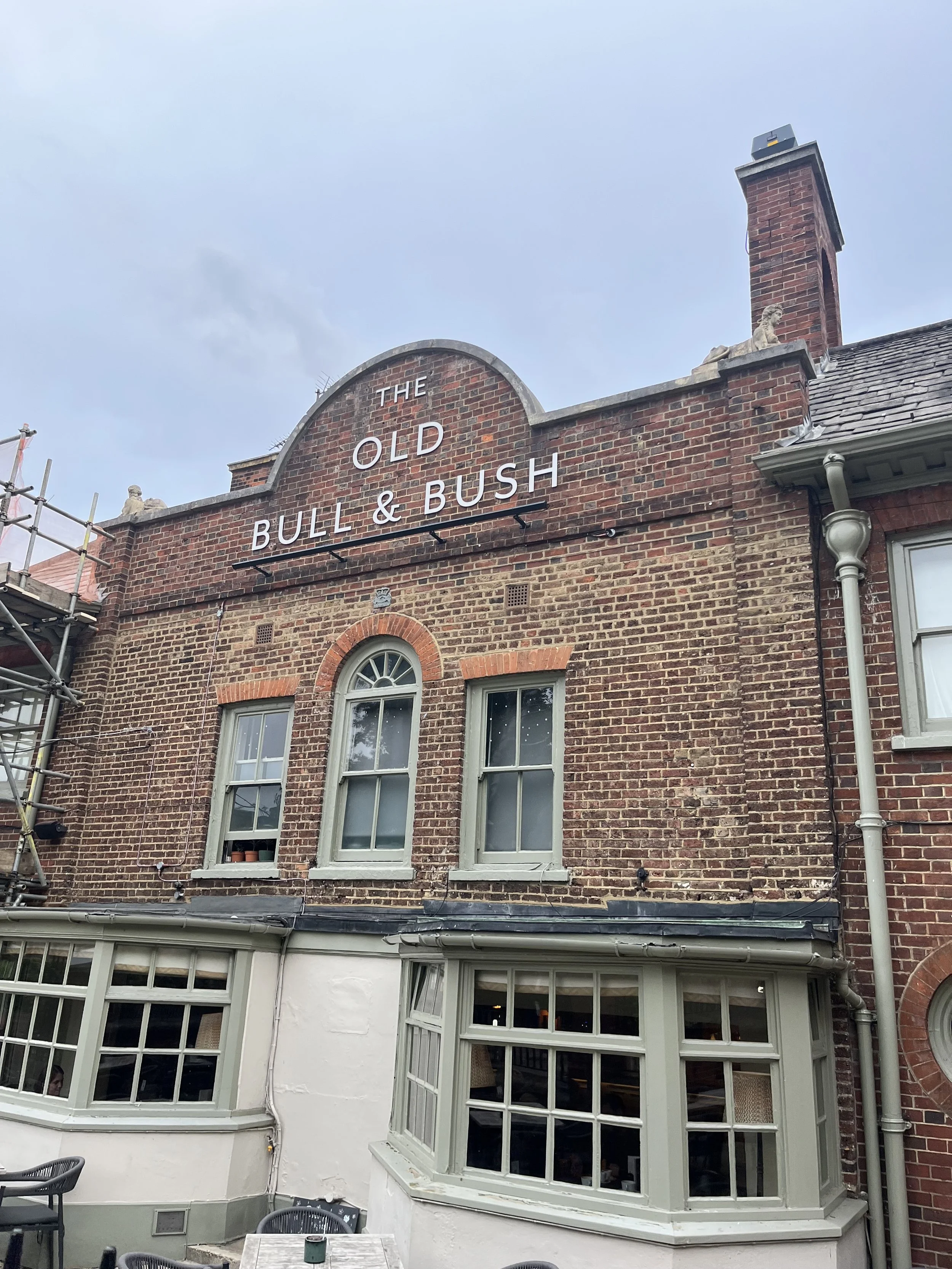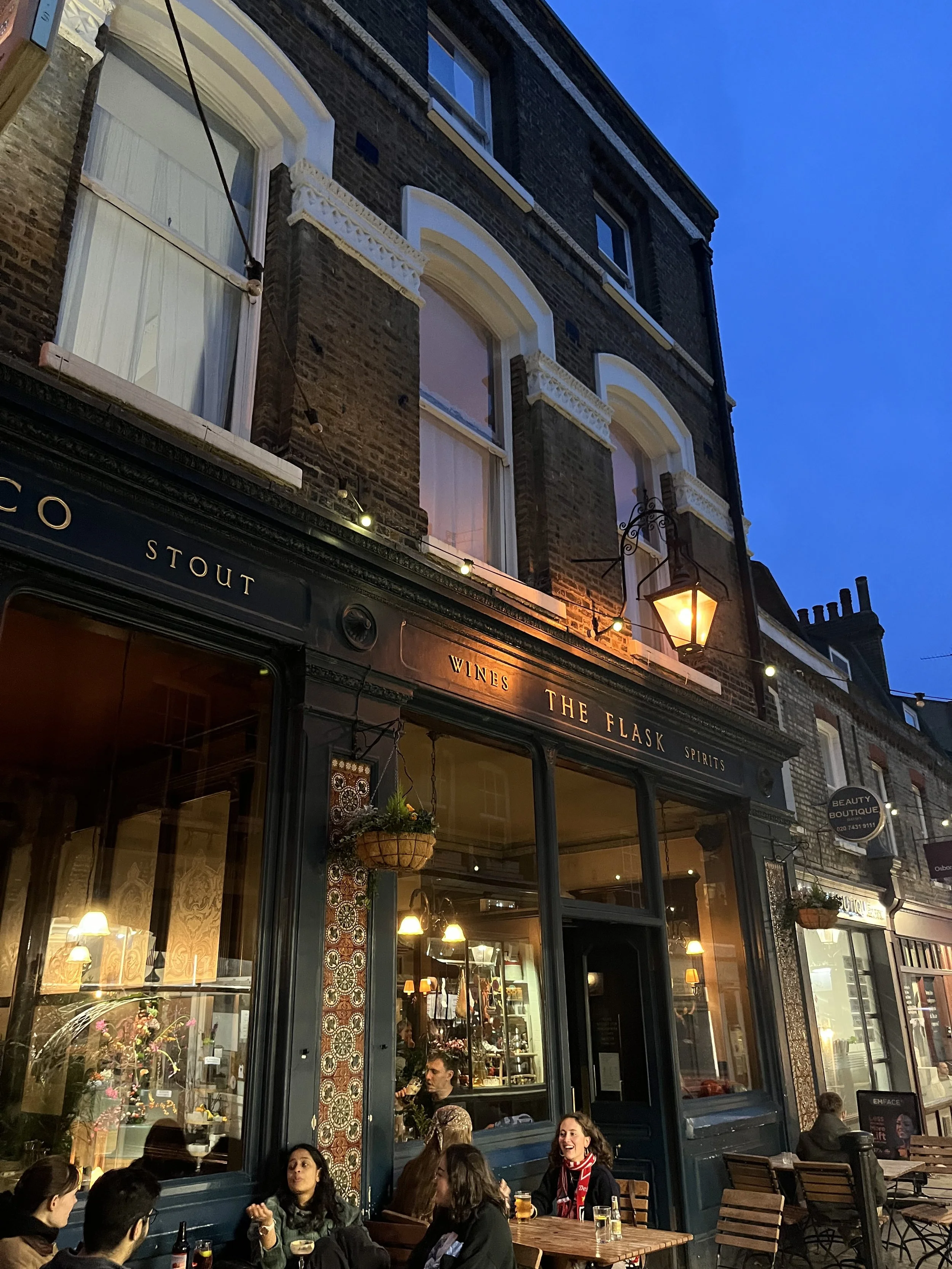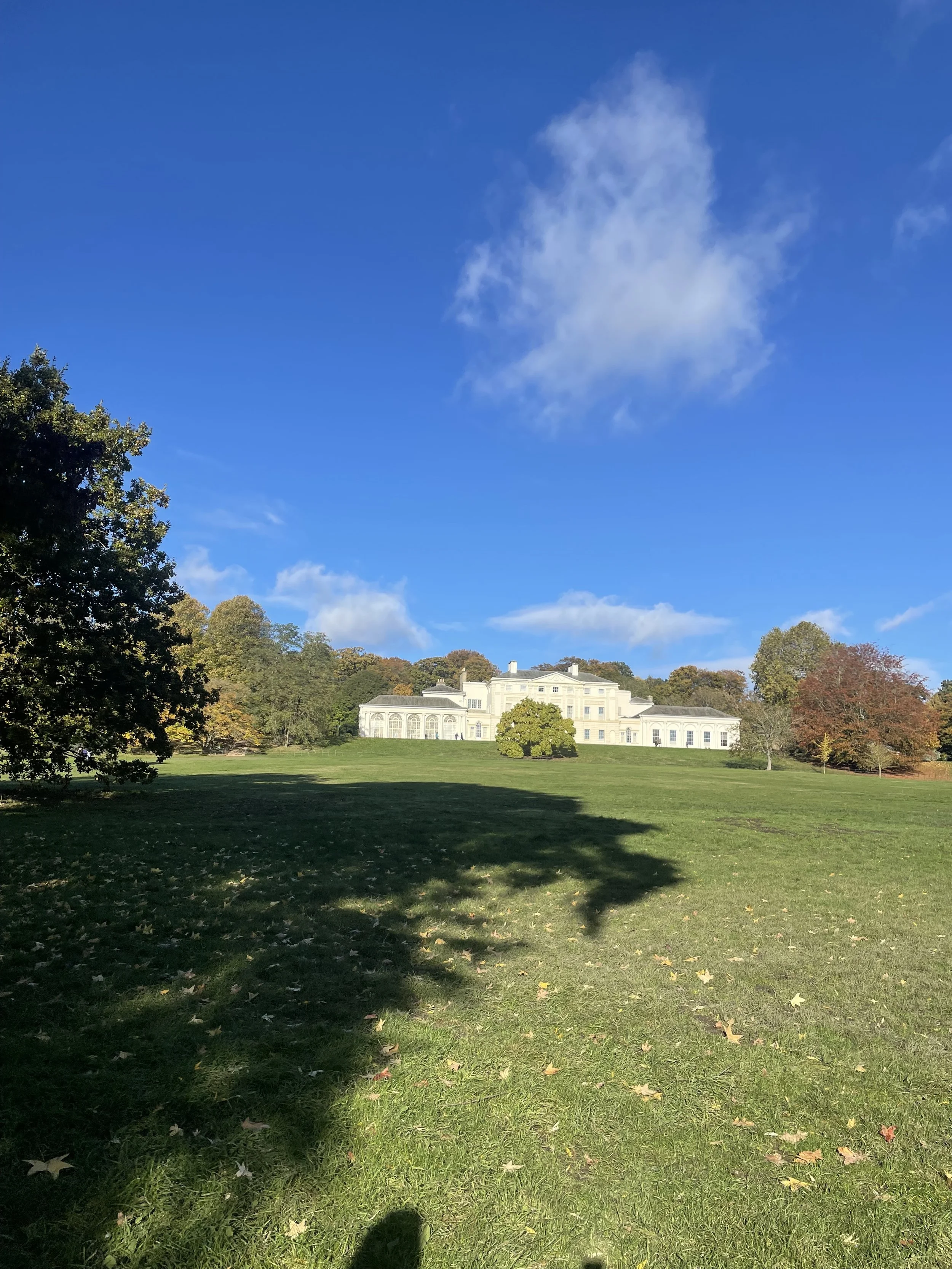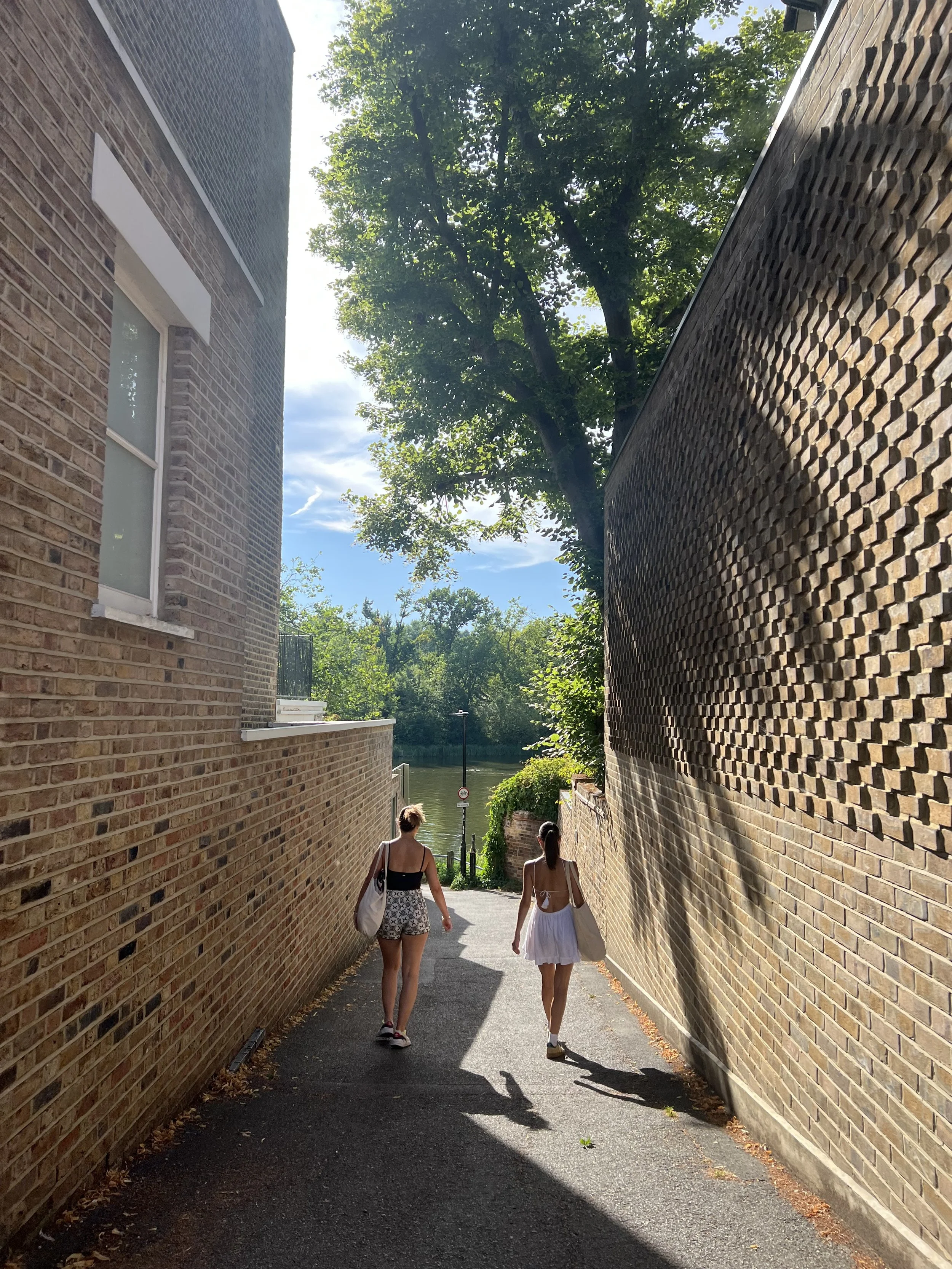Hampstead, London
Sometimes London feels too loud, too fast — when the city’s hustle seeps into your bones and you crave a slower rhythm, even for just a day. That’s when I head to Hampstead. This hilltop village is my reset button: a place where time slows, coffee is savored, and every street feels like a story waiting to be discovered.
Over the years, I’ve put together three Hampstead fi-tineraries to suit different moods and seasons:
The Classic Fi-Tinerary: a complete cultural and historical walk
The Autumn Pub Tour: cozy drinks and village charm
The Summer Lido Escape Route: ponds, picnic spots, and alfresco dining
For me, Hampstead isn’t just a destination — it’s a pause. Whether you live in London or are visiting for the first time, these fi-tineraries let you breathe, wander, and remember why the city can still feel like a village.
The Classic Fi-tinerary
Perched above the city, Hampstead feels suspended between centuries — cobbled lanes, leafy hills, and literary ghosts. For generations, writers, artists, and thinkers have sought this rare combination of beauty, calm, and inspiration.
Tucked into little Perrins Court, Ginger & White hums with the scent of freshly ground espresso and the clink of ceramic mugs. I started the morning with their signature avocado toast and a perfectly balanced flat white, perched by the window, watching the village slowly come to life. With caffeine in hand, I wandered through cobbled lanes lined with flower-filled shopfronts and Georgian façades. Flask Walk is pure Hampstead magic — vintage stores, local art prints, and that timeless bookish energy. I ducked into Daunt Books for a quiet browse, then lingered by Aesop Hampstead, admiring its serene scents.
From Well Walk, the path leads directly onto Hampstead Heath, an ample open green space in the city. You’ll see joggers, dog walkers, and sometimes a light mist over the grass. There are benches along the way if you want to sit and relax. For a great view of London, head up to Parliament Hill — you can see the Shard, the Gherkin, and rooftops stretching across the city.
Not far from Hampstead Heath is Fenton House, a red-brick mansion built in 1686 and managed by the National Trust. It's open from 2 March to 2 November, but only on Fridays, Sundays, and Bank Holiday Mondays. The house is open from 11 am to 5 pm, and tickets are £10.50 for adults (free for National Trust members and under-18s). Inside, you'll find beautifully maintained rooms filled with antique furniture, porcelain, and one of Britain’s finest collections of harpsichords. The walled garden and orchard offer a peaceful spot to relax with framed views of the London skyline — making it a must-see for anyone interested in history, music, or classic English gardens.
Just a short walk away, Keats House offers a different kind of intimacy. This graceful Regency villa was once home to the poet John Keats, who lived here from 1818 to 1820. It was in this house that he fell deeply in love with Fanny Brawne and wrote some of his greatest works, including Ode to a Nightingale, said to have been inspired by the nightingales that sang in the garden. Inside, his letters, manuscripts, and delicate sketches fill the rooms with a sense of longing and genius.
After a dose of poetry and history, a leisurely lunch at La Crêperie de Hampstead is the perfect next stop. Serving irresistible crêpes from its little stand on Hampstead High Street since the 1980s, the café fills the air with the smell of sizzling butter and sugar — and there’s almost always a queue, a beloved Hampstead ritual.
Once you’ve refueled, continue your day with a short walk to the western edge of the Heath, where one of Hampstead’s most enchanting secrets awaits: The Hill Garden and Pergola. Originally the private Edwardian estate of Lord Leverhulme, this elevated terrace and garden were designed in the early 1900s as a grand setting for summer parties and garden walks. In spring, blossoms spill over the pergola’s arches; in autumn, the vines turn to gold, creating a peaceful and picturesque escape from the village streets.
Next, it's time for a pint. The Holly Bush has stood since the 18th century. Inside, wooden beams, soft lighting, and the crackle of a fire create the kind of warmth that only old London pubs can offer. As the day winds down, head to The Wells Tavern for dinner — refined yet relaxed, its candlelit rooms filled with the soft chatter of locals. The menu celebrates British comfort at its best: roasted lamb shoulder, buttery mash, seasonal vegetables, and a perfectly poured glass of red.
The Autumn Pub Tour
Hampstead has long been a center of cultural and social activity on the northern edge of London. Its pubs, many dating back several centuries, offer insight into the village’s history, from coaching inns to literary haunts. This walk explores Hampstead’s historic taverns and natural landmarks, providing a view into the area’s architectural, social, and cultural heritage.
Begin at The Spaniards Inn, a 16th-century coaching tavern on the edge of Hampstead Heath. The inn is notable for its survival through centuries of social change and for its literary connections, as it appears in Charles Dickens’ A Tale of Two Cities. It was also associated with highwaymen such as Dick Turpin, who reputedly used the surrounding Heath roads. The building retains original architectural features, including oak beams, low ceilings, and a traditional hearth, reflecting the late Tudor style.
A short walk leads to The Old Bull & Bush, which originated as a rural inn in the 1700s. It served travelers on the edge of London and later became a destination for Edwardian visitors seeking leisure on Hampstead Heath. The pub’s structure and interior have retained elements characteristic of 18th- and 19th-century inns, including exposed timber framing and fireplaces, providing a tangible connection to the area’s social history.
Next is Whitestone Pond, located at the highest natural point in London. Historically, this vantage point has attracted painters, poets, and walkers who used it to capture views of the city while enjoying the surrounding Heath landscape. The pond and its surroundings represent Hampstead Heath’s role as a preserved open space in urban London, maintaining its natural and recreational significance for centuries.
Continuing along a narrow lane, you reach The Holly Bush, a Georgian-era public house dating from the 18th century. The pub has been a meeting place for local residents, writers, and actors over the centuries. Its interior, with candlelit rooms, timber beams, and fireplaces, reflects Georgian pub design and the continuity of social gathering spaces in Hampstead.
For a food stop, L’Antica Pizzeria offers a modern addition to the area, bringing traditional Neapolitan pizza-making techniques to Hampstead.
Finish the day with a pint at The Flask, one of Hampstead’s oldest taverns, with references dating back to the 17th century. Its cellars were reportedly used for secret Jacobite meetings.
Hampstead’s combination of historic pubs, leafy lanes, and elevated views makes it the perfect setting for an autumn fi‑tinerary, where every turn offers a blend of cultural history and seasonal beauty.
Summer Lido Escape Route
Long days, cool ponds, and easy alfresco dining — Hampstead in full summer bloom offers the perfect mix of nature, culture, and village charm.
Start the day at The Nook or Intermission Coffee, both just a 5–10 minute walk from Hampstead Heath Overground station. Sunlight streams through the large windows, illuminating interiors buzzing with locals. Iced flat whites, matcha lattes, and fresh pastries make for a gentle start before you head outdoors to explore the village and Heath.
A short walk brings you to the Hampstead Heath ponds, a quintessential London summer experience. The Ladies’, Men’s, and Mixed Ponds provide refreshing water, fringed by greenery, offering a rare sense of openness in the city. Early mornings are best when the water is calm, the surroundings are serene, and the crowds are minimal.
From there, make your way to Parliament Hill for a picnic. Grab fresh pastries, sandwiches, seasonal fruit, and cheeses from Heath Street Bakehouse, spread a blanket, and enjoy expansive views across London’s skyline. The sun glints off the city’s towers while the Heath hums with walkers, picnickers, and occasional bird song — a perfect contrast of urban and natural beauty.
A stroll through Kenwood House Gardens reveals lush lawns, meticulously maintained flowerbeds, and a calm, stately sculpture collection. Inside the house, art lovers will be drawn to Renoir’s self-portrait, among other masterpieces, offering a quiet moment to connect with history and creativity. The gardens themselves are the perfect place to pause, read, or admire the summer blooms while letting the village’s gentle rhythm wash over you.
Lunch awaits at The Freemasons Arms, a sun-dappled pub terrace serving Mediterranean-leaning dishes perfect for summer. Grilled halloumi with peppers, classic beef burgers, or a refreshing elderflower spritz pair beautifully with the warm afternoon sun.
After lunch, wander through Hampstead Village with ice cream from Oddono’s or pastries from Gail’s Bakery. Browse vintage shops along Flask Walk or pick up a small souvenir, enjoying the slow, village-paced summer streets.
Finish the day with drinks at The Garden Gate Pub, where shaded outdoor seating allows for a relaxed cider or Pimm’s while soaking up the warm evening. Dinner at The Horseshoe rounds off the experience, with seasonal British dishes, craft beers, and cozy, lively atmospheres. A slow walk back through lamplit village lanes provides a perfect end, as Hampstead glows in the gentle summer dusk.



